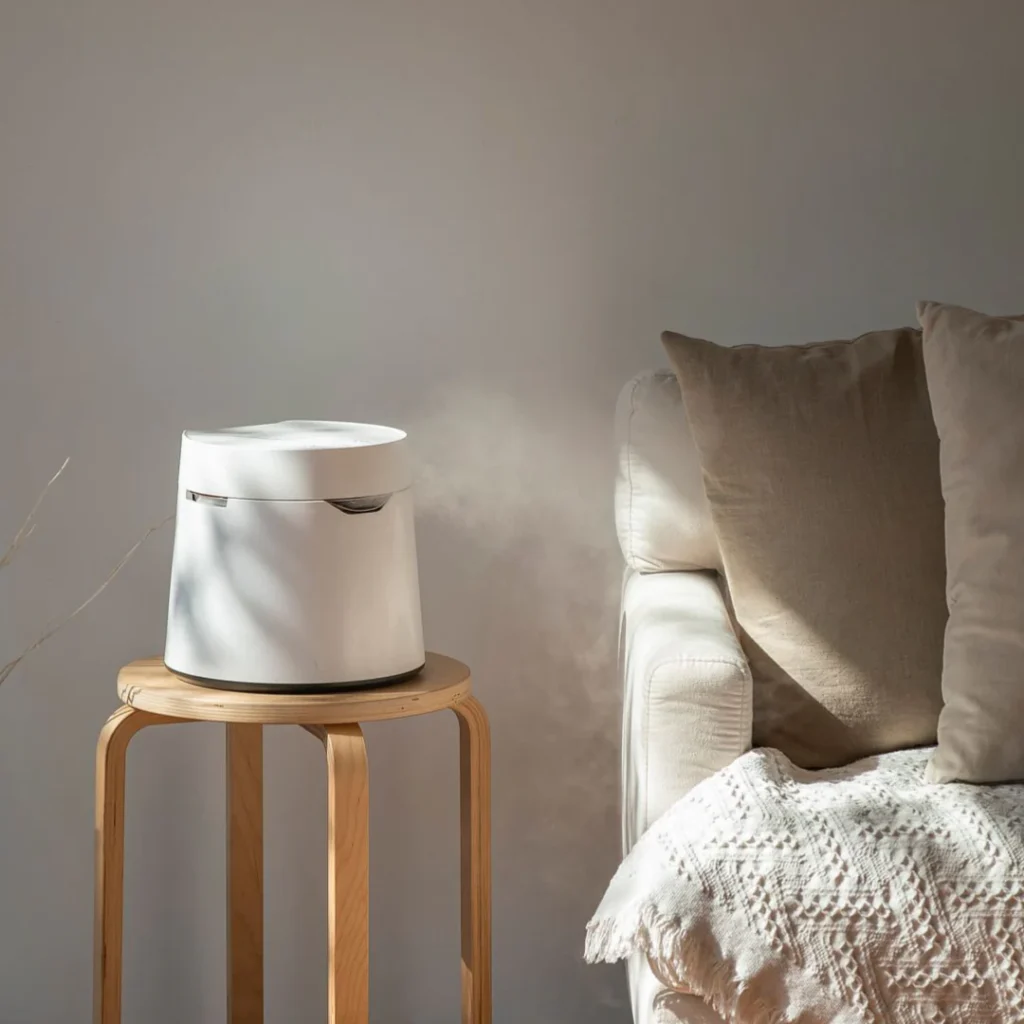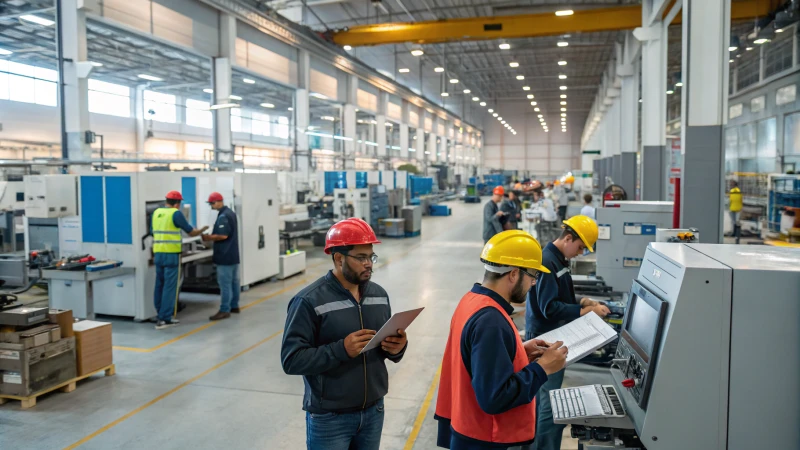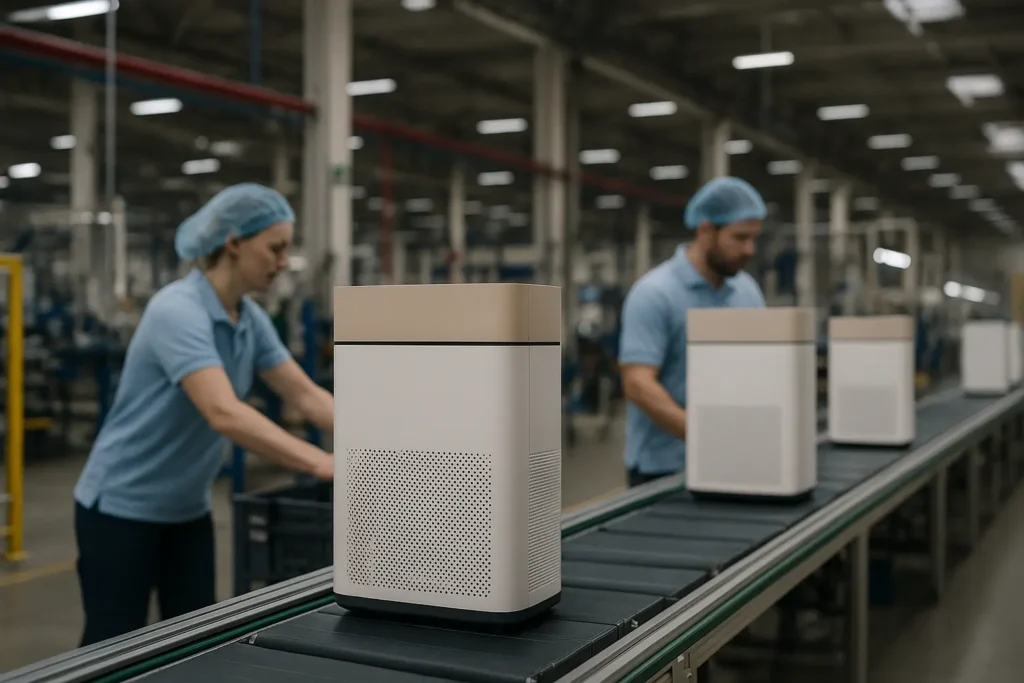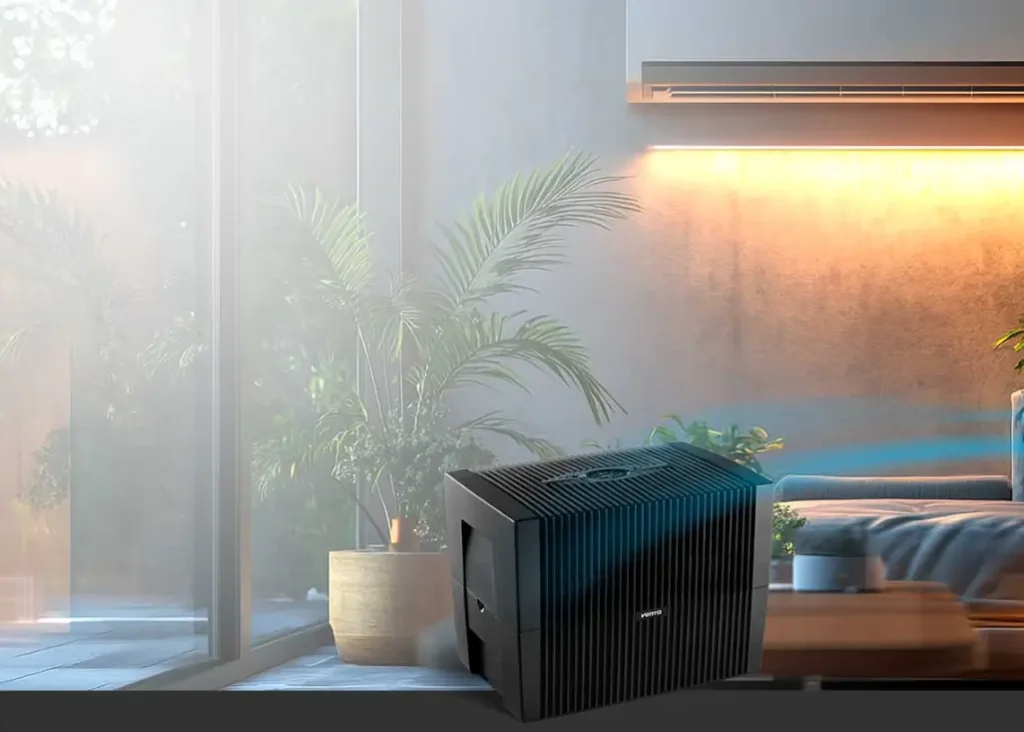Les allergies saisonnières peuvent être frustrantes et potentiellement dangereuses. Bien qu'il n'y ait pas de remède, il existe des moyens efficaces de les prévenir et de les traiter. Nous avons répertorié ces remèdes ci-dessous.
Certaines périodes de l'année sont propices aux réactions allergiques. Les allergies saisonnières surviennent lorsque l'organisme est sensible à certains pollens de plantes, d'arbres et d'herbes. Selon votre degré de sensibilité, vous pouvez souffrir de réactions allergiques pendant un ou deux mois par an.
Les symptômes des allergies saisonnières sont la toux, les éternuements, l'écoulement nasal et les démangeaisons oculaires. Ces symptômes peuvent durer de quelques heures à quelques jours. Dans certains cas pénibles, ils peuvent être graves.
L'élimination de ces allergies saisonnières et la prévention de leur apparition doivent être une priorité dans votre maison. Il existe des méthodes et des stratégies efficaces à cet égard, notamment l'utilisation de des purificateurs d'air de haute qualité, de qualité médicale.
D'où viennent les allergies saisonnières ?
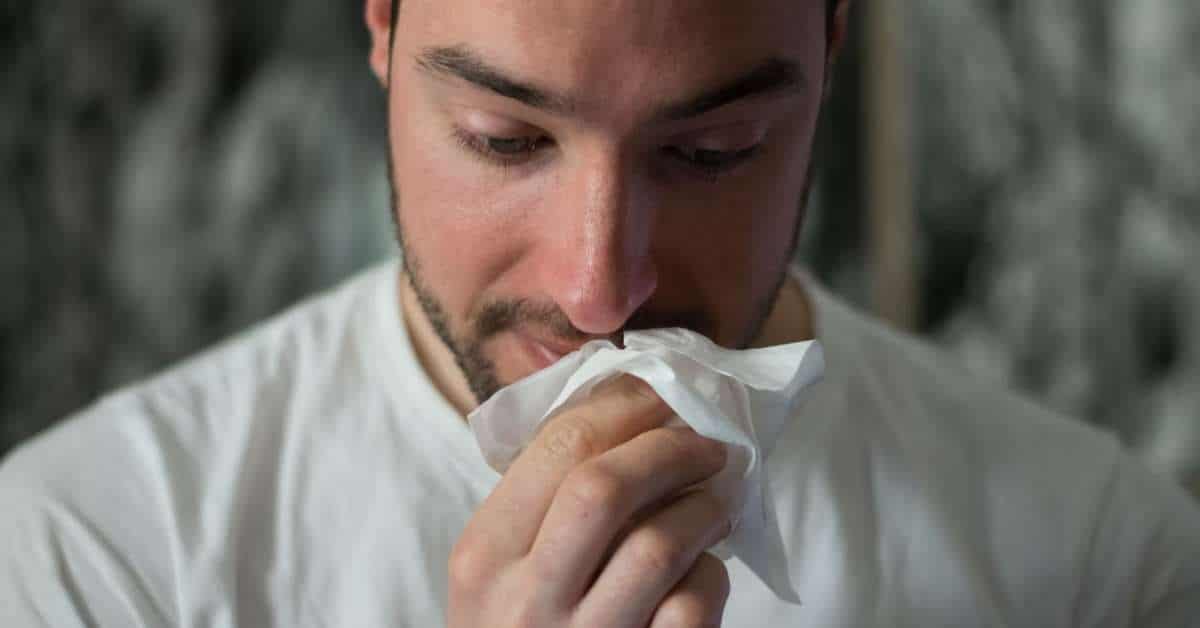
Source de l'image : Unsplash
En général, les allergies surviennent lorsque quelque chose pénètre dans votre corps et que votre système immunitaire vous signale que cette chose est dangereuse. En réaction, votre corps libère des substances chimiques telles que les histamines dans votre circulation sanguine. Ce sont elles qui provoquent les symptômes des allergies.
Il existe de nombreuses causes d'allergies saisonnières. Au printemps, les arbres sont les causes les plus courantes. Le rhume des foins survient souvent lorsque l'on inhale du pollen de châtaignier, de peuplier, de saule et d'aulne.
L'été n'est pas non plus une période sûre. Les foins coupés sont souvent à l'origine d'allergies durant cette période. Or, les graminées comme le fléole des prés et l'ivraie peuvent également déclencher le rhume des foins.
En automne, il faut se méfier de l'ambroisie. Elles ont tendance à proliférer dans les régions tempérées et sont assez difficiles à contrôler. Le pollen qu'elle libère est réputé pour provoquant des allergies graves.
En hiver, ces plantes et ces arbres sont en dormance. Mais comme les gens ont tendance à rester à l'intérieur, ils sont susceptibles d'inhaler des allergènes tels que les acariens et les moisissures.
Est-il normal d'avoir des allergènes dans l'air ?

Source de l'image : Unsplash
Si vous êtes à l'extérieur de votre maison, alors oui, il est normal que des allergènes soient présents. C'est quelque chose que vous ne pouvez pas contrôler, car il y a des arbres, des fleurs et des herbes à l'extérieur. D'autres substances susceptibles de déclencher vos allergies sont également présentes, comme des produits chimiques et des gaz toxiques.
Mais à l'intérieur de votre maison, ces allergènes ne sont pas d'origine naturelle. Ces substances allergisantes ne devraient pas être présentes à l'intérieur, en particulier dans le contexte de vos allergies saisonnières.
Y a-t-il des plantes ou des fleurs en herbe dans votre maison ? Y a-t-il des arbres à l'intérieur ? Si vous répondez par la négative à ces questions, les allergènes peuvent être considérés comme une anomalie. Il convient de les éliminer, faute de quoi vous subirez les désagréments des réactions allergiques.
Les allergies saisonnières peuvent-elles être dangereuses ?
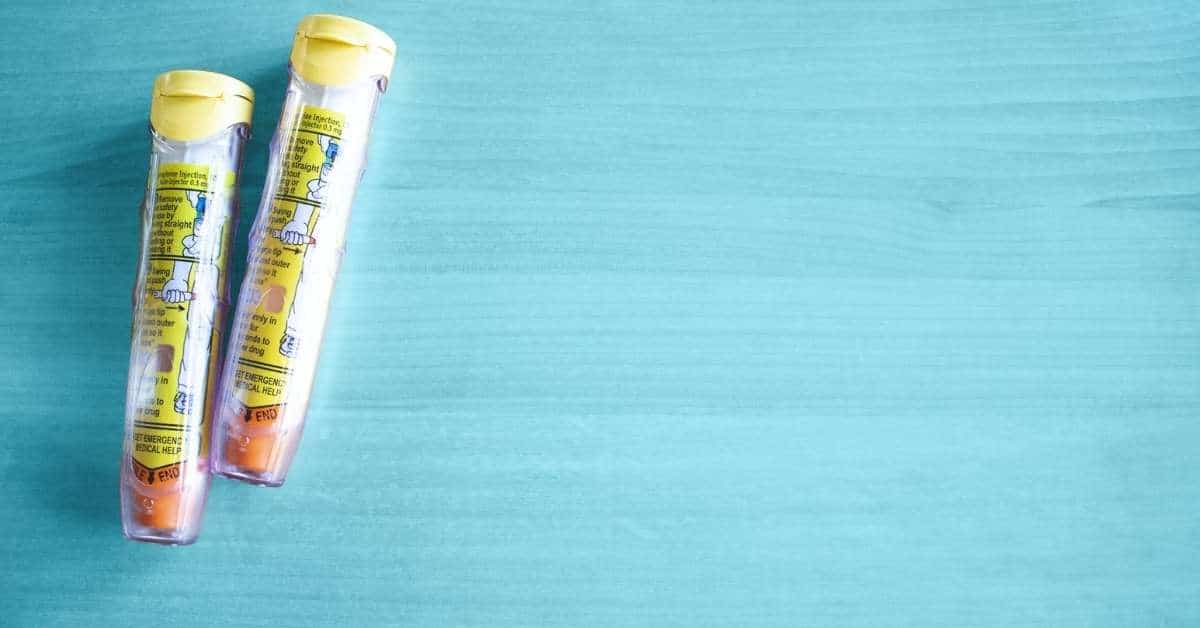
Source de l'image : Unsplash
Les allergies sont en fait courantes. En conséquence, plus de 50 millions d'Américains souffrent de différents types d'allergies chaque année. En outre, elles figurent parmi les principales causes de maladies chroniques dans ce pays.
La plupart du temps, les réactions allergiques tendent à générer les symptômes suivants : éternuements, éruptions cutanées, toux et écoulement nasal. Ces symptômes constituent également un état appelé rhume des foins.
Des réactions allergiques graves peuvent également se produire. Elles peuvent entraîner des difficultés respiratoires, une baisse de la tension artérielle et des crises d'asthme fréquentes. Elles peuvent également entraîner décès dû à l'anaphylaxie. Cette dernière est souvent causée par des médicaments et des aliments. Mais parfois, des allergènes saisonniers ou inconnus peuvent aussi la déclencher.
Les allergies ne doivent donc jamais être négligées. Un traitement immédiat et des mesures préventives sont nécessaires pour garder cette condition sous contrôle.
Zones communes de votre maison où les allergènes sont présents

Source de l'image : Unsplash
Lorsque la saison des allergies arrive, certaines parties de votre maison doivent être surveillées. D'une manière ou d'une autre, ces zones sont souvent infestées d'allergènes.
Salles de séjour
En raison de la présence de fenêtres et de portes à proximité de votre salon, les allergènes et autres polluants peuvent facilement y proliférer. Il est essentiel qu'un Purificateur d'air certifié AHAM est présent dans cette zone afin de garantir que ces polluants atmosphériques ne se répandent pas.
Chambres à coucher
Les chambres à coucher ne sont pas non plus à l'abri des allergènes. N'oubliez pas qu'il y a des fenêtres et d'autres ouvertures dans ces espaces. Si vous avez tendance à ouvrir ces fenêtres de temps en temps, il est très probable que des polluants extérieurs puissent y pénétrer.
Sous-sol
Lorsqu'il y a des fissures dans les sols et les murs, les allergènes saisonniers peuvent également se développer. Vous devez vous en méfier, en particulier dans les zones humides comme votre sous-sol. En effet, les allergènes peuvent proliférer dans les environnements humides. Veillez à effectuer les réparations nécessaires dans votre sous-sol, y compris au niveau de la plomberie et des voies d'eau.
Pourquoi la purification des allergènes est-elle importante ?
Dans la plupart des cas, les allergies affectent les voies nasales, les sinus, les voies respiratoires et même la peau. Elles peuvent délibérément avoir un impact sur votre système digestif, provoquant une gêne pendant toute leur durée.
Gardez à l'esprit que les réactions allergiques vont de légères à graves. Dans les cas graves, une personne peut éprouver les pires formes de symptômes d'allergie. Bien entendu, vous ne voulez pas que cela vous arrive, à vous ou aux membres de votre famille.
Il est important d'éliminer les allergènes de vos espaces de vie pour vous assurer que vous ne souffrirez pas d'allergies saisonnières. Vous devriez essayer des stratégies de purification qui réduiraient ou élimineraient la présence de ces substances allergisantes. L'un des moyens d'y parvenir est l'utilisation de Purificateurs d'air HEPA.
Ajouter un purificateur d'air pour se débarrasser des allergies saisonnières

Source de l'image : iStockphoto
L'un des moyens les plus efficaces d'éliminer et de prévenir les allergies saisonnières est l'utilisation de purificateurs d'air. Ces purificateurs d'air sont conçus pour éliminer ou supprimer divers polluants en suspension dans l'air, tels que les causes courantes d'allergies.
Lisez la suite pour en savoir plus sur ces purificateurs d'air et sur la manière dont ils peuvent vous aider à atténuer les symptômes et la prévalence des allergies saisonnières.
Pourquoi un purificateur d'air est-il important pour améliorer la qualité de l'air ?
La qualité de l'air intérieur est aujourd'hui un problème. En effet, la pollution de l'air intérieur entraîne des problèmes de santé plus graves que la pollution de l'air extérieur. Après tout, la concentration de contaminants dans les espaces clos est assez élevée par rapport à l'extérieur.
Il est difficile de traiter les particules en suspension dans l'air. Les méthodes de nettoyage ordinaires, comme l'aspirateur, ne peuvent pas les éliminer efficacement. En outre, elles se déplacent librement, car elles sont légères et invisibles. Il est impossible de s'y attaquer sans systèmes spécialisés.
Les purificateurs d'air sont la solution pour améliorer la qualité de l'air intérieur. Ces purificateurs d'air utilisent un système de filtration simple mais efficace qui capture un certain nombre de polluants, tels que les squames d'animaux domestiques, les acariens, la saleté et le pollen. Ces appareils sont également essentiels pour minimiser la présence de bactéries et de virus.
Lisez la suite pour savoir comment ces purificateurs d'air fonctionnent pour éliminer les allergies saisonnières.
Purificateurs d'air pour éliminer les allergies saisonnières
Il existe une longue liste de traitements possibles pour les allergies saisonnières. Mais si vous voulez un traitement infaillible, vous devez investir dans des purificateurs d'air. Les purificateurs d'air ne sont pas un traitement pour ces allergies, mais ils les empêchent de se produire.
Le terme clé ici est "élimination". Une fois que ces purificateurs d'air sont installés dans vos espaces de vie, les allergènes tels que le pollen ne peuvent plus circuler librement dans l'air. Bien entendu, l'exposition à ces corps étrangers est ainsi réduite au minimum.
Les purificateurs d'air peuvent contrôler la présence de polluants atmosphériques dans une zone donnée. Leur mécanisme de filtration est simple. Cependant, ils sont très efficaces pour éliminer de l'air les causes courantes d'allergies saisonnières.
Les purificateurs d'air pour lutter contre les allergies saisonnières sont-ils sûrs ?
Absolument. Les purificateurs d'air à base de filtres sont généralement sûrs, car ils ne rejettent pas d'émissions ni de résidus nocifs. Les filtres ne contiennent pas de substances ajoutées qui constituent une menace pour la santé humaine.
Le seul type de purificateur d'air dont il faut se méfier est le purificateur d'air à l'ozone. Ces purificateurs d'air à l'ozone produisent de l'ozone, un composé gazeux censé neutraliser certains contaminants.
La filtration de l'ozone est utilisée dans les systèmes de filtration de l'eau. Cependant, ils ne conviennent pas pour la purification de l'air, car l'ozone est une forme d'irritant pulmonaire. L'exposition à l'ozone peut entraîner des complications pour la santé. En même temps, l'Agence pour la protection de l'environnement a mentionné l'efficacité de ces filtres à ozone. purificateurs d'air à l'ozone n'est pas encore vérifiée.
Comment les purificateurs d'air éliminent-ils les causes des allergies saisonnières ?
Les allergies saisonnières sont dues à l'exposition à des éléments de nature "saisonnière", tels que le pollen. Cela signifie qu'ils ne sont présents qu'à certaines périodes de l'année.
Les purificateurs d'air traitent ces substances à l'aide de leurs filtres HEPA. Pour simplifier, les filtres HEPA éliminent les particules microscopiques. Ils sont conçus pour capturer jusqu'à 0,3 micron de polluants. Ils sont donc capables de le piégeage des allergènes et de certains agents pathogènes.
Ces filtres HEPA sont généralement constitués de fibres plastiques ou de verre borosilicaté. Ils sont placés dans une couche de fibres de manière aléatoire. Mais les filtres HEPA ne fonctionnent pas comme un tamis qui retient les grosses particules et laisse passer les petites. Au contraire, ils retiennent les particules par interception, diffusion et impaction. En bref, ces contaminants finiraient par adhérer aux fibres.
Éliminer les allergies saisonnières à l'aide d'un purificateur d'air : Étape par étape
Les purificateurs d'air sont efficaces pour éliminer les allergènes présents dans l'air. Voici comment ces purificateurs d'air procèdent :
- Les purificateurs d'air sont équipés de ventilateurs qui aspirent l'air à l'intérieur. Il y a des entrées dans lesquelles l'air pénètre.
- À l'intérieur, l'air est poussé à travers plusieurs couches de filtres. Le purificateur d'air standard comporte les filtres suivants : pré-filtre, filtre HEPA et filtre à charbon.
- C'est sur le filtre HEPA que la plupart des allergènes sont piégés. Les filtres ordinaires ne peuvent pas éliminer les allergènes en raison de leur taille extrêmement réduite.
- Après avoir traversé tous les filtres, l'air est redistribué dans la pièce.
Le processus est répété jusqu'à ce que la présence de contaminants allergisants soit contrôlée. Comme vous pouvez le constater, la procédure est assez simple. Mais elle est suffisamment efficace pour prévenir l'apparition des allergies saisonnières.
Combien de temps faut-il pour que les allergies saisonnières disparaissent après l'élimination ?
Les réactions allergiques durent plus ou moins longtemps. Même si vous avez réussi à éliminer la cause de l'allergie, cela ne signifie pas que les symptômes disparaîtront immédiatement.
Dans certains cas, l'allergie disparaît au bout de quelques heures, surtout si la personne n'est plus exposée aux facteurs déclenchants. Cependant, certaines personnes ont la vie dure. Elles doivent alors supporter les symptômes pendant plusieurs jours.
Là encore, l'exposition reste un facteur important. Pendant la saison des allergies, il est probable que les réactions allergiques durent plus longtemps. Il est donc nécessaire de disposer d'un purificateur d'air dans votre espace de vie pour éviter une agonie prolongée.
Éléments à prendre en compte avant d'acheter un purificateur d'air pour éliminer les allergies saisonnières
Lorsqu'il s'agit de lutter contre les allergènes, il est essentiel de choisir le bon purificateur d'air. Les caractéristiques suivantes doivent être présentes pour que votre purificateur d'air puisse capturer et éliminer les causes des allergies saisonnières.
- Filtres HEPA - Un filtre HEPA est un élément important d'un purificateur d'air. Il capture 99,9 % des contaminants d'une taille inférieure à 0,3 micron. C'est à cette échelle que l'on trouve les allergènes les plus courants, comme le pollen. Si le purificateur d'air est équipé d'un filtre HEPA, il est garanti qu'il peut filtrer la majorité des allergènes présents dans l'air.
- Filtre à charbon actif - Les allergies peuvent également être déclenchées par les odeurs, les substances gazeuses et les substances chimiques. les composés organiques volatils. Les filtres HEPA ne peuvent pas traiter ces éléments. Ce qu'il vous faut, c'est un filtre à charbon. Ce dernier fonctionne en capturant les contaminants susmentionnés à sa surface.
- Superficie en pieds carrés - Vous devez également évaluer la portée efficace d'un purificateur d'air. Par exemple, si votre espace de vie a une superficie de 500 mètres carrés, vous avez besoin d'un purificateur d'air ayant une couverture d'au moins 500 mètres carrés. Plus la couverture est grande, mieux c'est.
- Taux de distribution d'air pur - Vous devez vérifier le débit d'air purifié du purificateur d'air. En résumé, ce taux indique le volume d'air qu'un purificateur d'air peut purifier dans une période et un environnement donnés. Là encore, plus le CADR est élevé, mieux c'est.
Les purificateurs d'air les plus efficaces pour se débarrasser des allergies saisonnières
Tous les purificateurs d'air ne sont pas conçus de la même manière. Certains ont des qualités spécifiques qui leur permettent d'exceller dans l'élimination des allergènes dans l'air.
Les purificateurs d'air suivants de HisoAir font partie des systèmes de purification de l'air que vous devez vérifier en priorité si vous souffrez d'allergies saisonnières :
| Couverture | Types de filtres | |
| Modèle HisoAir HA-1968 | 1937 pieds carrés | Filtre HEPA, filtre à charbon actif, préfiltre, lumière UVC |
| HisoAir Modèle HA-1601 | 1011 pieds carrés | Filtre HEPA, filtre à charbon actif, préfiltre, lumière UVC |
| Modèle HisoAir HA-138 | 904 pieds carrés | Filtre HEPA, filtre à charbon actif, préfiltre, lumière UVC |
1. Modèle HisoAir HA-1968
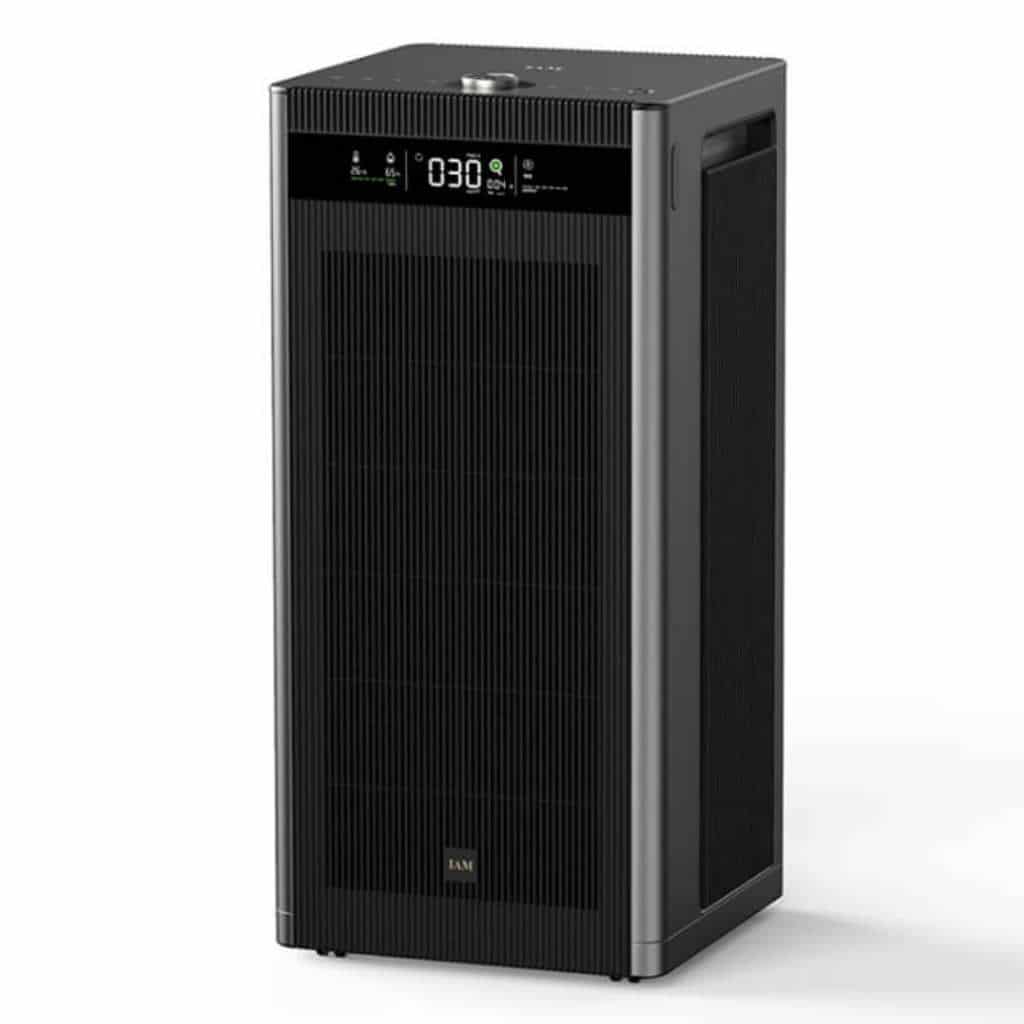
Source de l'image : HisoAir
Conçu pour les grands espaces, le modèle HisoAir HA-1968 est un purificateur d'air efficace pour les maisons, les bâtiments et les écoles. Ce purificateur d'air a une couverture efficace de 1937 pieds carrés. Par ailleurs, son débit d'air pur élevé (1 500 m3/h) indique qu'il peut traiter et purifier l'air dans de grands volumes. Si vous avez besoin d'un purificateur d'air pour toute la maison, cet appareil pourrait être l'option idéale.
Le modèle HisoAir HA-1968 possède les filtres nécessaires pour éliminer plusieurs polluants dans l'air, tels que les allergènes. Son filtre HEPA est de qualité médicale. Il élimine 99,9 % des contaminants microscopiques, tels que le pollen, les moisissures et les spores. Grâce à ce purificateur d'air, les effets néfastes du printemps sur votre corps sont minimisés !
| AVANTAGES | CONS |
|
|
2. HisoAir Modèle HA-1601
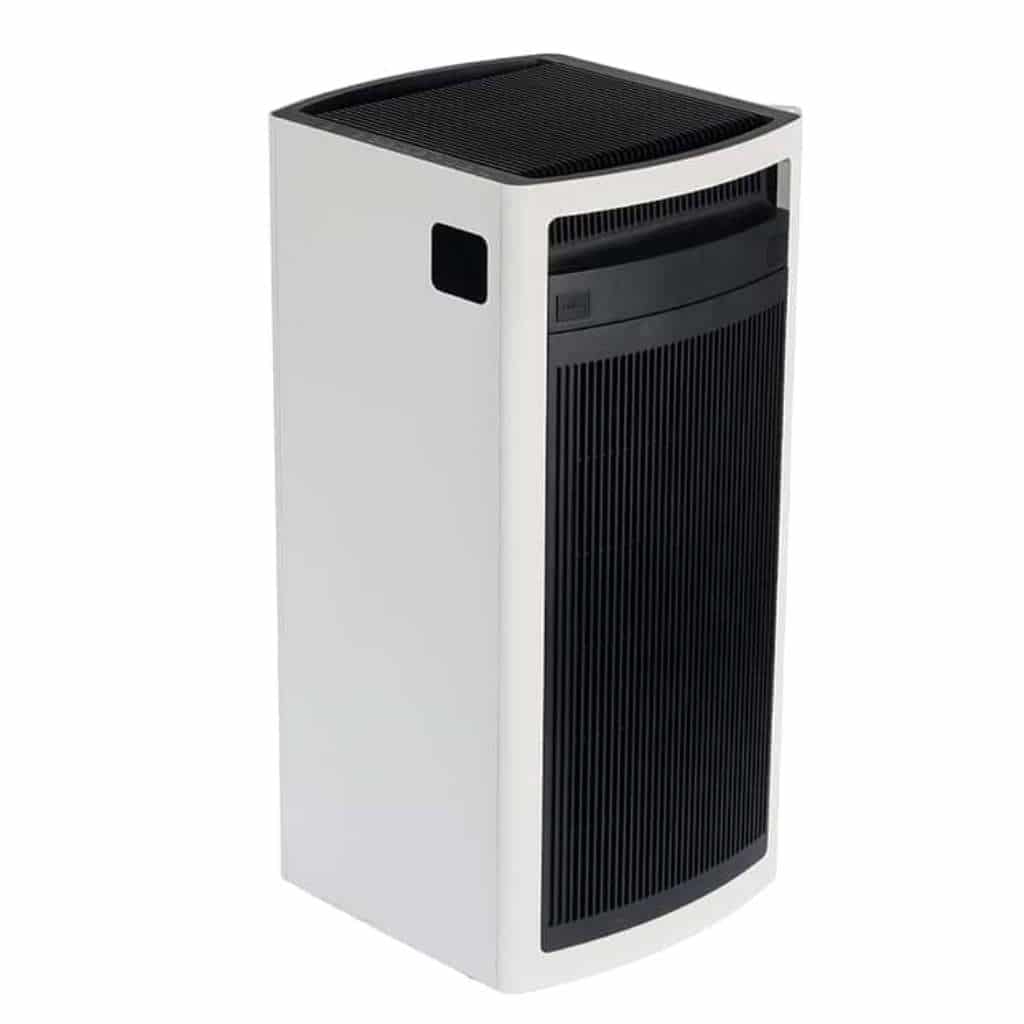
Source de l'image : HisoAir
Un autre purificateur d'air que vous devriez essayer est le HisoAir Model HA-1601. Celui-ci est conçu pour fonctionner dans des espaces allant jusqu'à 1 000 pieds carrés. Sa portée n'est pas aussi grande que celle du modèle HA-1968, mais elle reste indéniablement étendue. Il peut toujours purifier l'air dans plusieurs pièces. Il dispose également d'un débit d'air puissant, comme en témoigne son débit d'air pur élevé (800 m3/h). Vous pouvez être sûr que ce purificateur d'air peut contrôler efficacement les polluants en suspension dans l'air.
Ce purificateur d'air ne traite pas seulement les allergènes. Il est également capable d'éliminer les agents pathogènes, tels que les virus et les bactéries. Il est doté d'un filtre HEPA capable de filtrer ces menaces microscopiques, ce qui vous permet de respirer un air frais et sûr. Il est également équipé d'une lampe UV qui tue progressivement les agents pathogènes présents dans l'air.
| AVANTAGES | CONS |
|
|
3. Modèle HisoAir HA-138
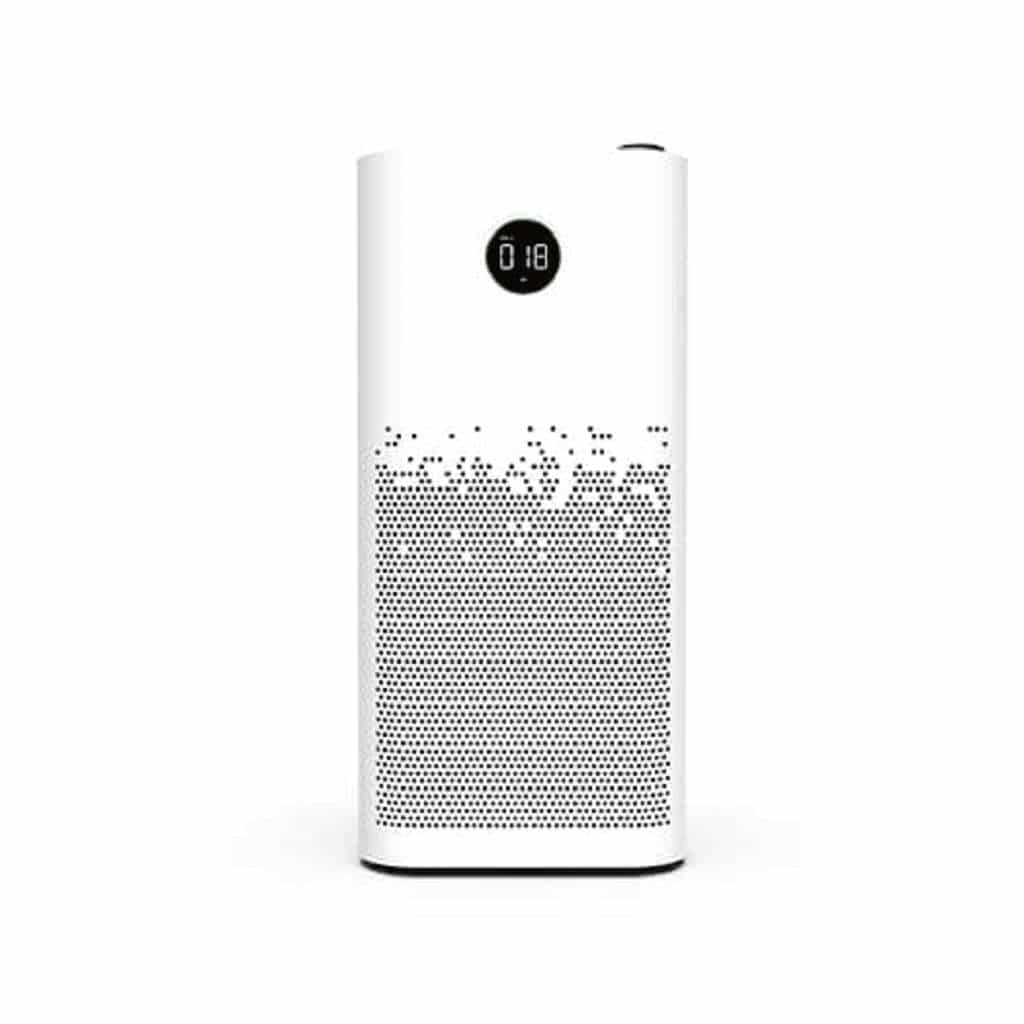
Source de l'image : HisoAir
Le modèle HisoAir HA-138 est un purificateur d'air numérique de premier ordre. Grâce à ce purificateur d'air, votre espace sera débarrassé des contaminants courants, tels que les allergènes, les agents pathogènes, les gaz irritants et les substances. Il est même efficace pour éliminer les odeurs de fumée de cigarette et de nourriture, grâce à son filtre à charbon actif. Son débit d'air pur élevé (707 m3/h) garantit des performances optimales à chaque fois.
Ce purificateur d'air est doté de commandes conviviales. Techniquement, il vous permet de configurer ses paramètres de manière pratique. Vous pouvez ainsi optimiser les performances du purificateur d'air en fonction de vos besoins et de vos exigences. Comme il est équipé de capteurs de qualité de l'air, il vous permet de connaître l'état général de la qualité de votre air intérieur.
| AVANTAGES | CONS |
|
|
Comment prévenir les allergies saisonnières après l'éloignement ?
Les allergies saisonnières sont très ennuyeuses. Une fois que vous avez éliminé les allergènes grâce à vos purificateurs d'air, vous devez vous assurer que vous ne serez plus jamais gêné par les allergies.
Les stratégies suivantes peuvent vous aider à cet égard.
- Porter un masque - Les allergènes sont invisibles. Si vous êtes à l'extérieur de votre maison, il est impossible de savoir s'ils sont présents ou non. Pour plus de sécurité, vous devez porter un masque respiratoire N95. Il bloque 95 % des minuscules particules présentes dans l'air.
- Manger sainement - Les fruits tels que les oranges et les pommes peuvent aider une personne à développer une plus grande résistance aux allergies. Les chercheurs n'ont pas encore établi le lien entre les deux. Cependant, il ne fait aucun doute qu'un corps en bonne santé est plus résistant aux maladies.
- Nettoyez votre maison - En gardant votre maison propre, vous pouvez réduire les risques de contracter des allergies saisonnières. Le nettoyage permet d'éliminer les allergènes intérieurs qui se fixent sur les meubles, le sol et les murs de vos espaces de vie. Veillez à utiliser des nettoyants naturels, car les produits chimiques agressifs peuvent également irriter votre nez.
- Ne pas fumer - Les allergies saisonnières peuvent s'aggraver si quelqu'un fume à l'intérieur de votre maison. Les résidus toxiques des cigarettes peuvent également aggraver les symptômes tels que l'irritation des yeux et l'écoulement nasal. Ne laissez pas un fumeur vous empêcher de bénéficier d'un soulagement holistique des allergies !
Autres moyens de se débarrasser des allergies saisonnières
Des millions de personnes sont touchées par les allergies saisonnières. Dès l'éclosion du printemps, beaucoup commencent à éternuer, à tousser et à avoir le nez qui coule.
Heureusement, il existe d'autres moyens efficaces de lutter contre les symptômes des allergies saisonnières. En voici quelques-unes :
Remèdes en vente libre
Vous avez le choix entre plusieurs médicaments en vente libre qui peuvent vous débarrasser des symptômes de l'allergie. Les traitements suivants sont les plus plausibles :
- Antihistaminiques - Les antihistaminiques constituent le traitement le plus courant des symptômes d'allergie, tels que le larmoiement et l'écoulement nasal. Ils sont généralement pris par voie orale.
- Vaporisateurs nasaux - Les vaporisateurs nasaux de corticostéroïdes sont des médicaments qui peuvent soulager les symptômes de l'allergie. Toutefois, il serait préférable que vous consultiez votre médecin au sujet des effets possibles d'une exposition à long terme à ces sprays nasaux.
-
- Décongestionnants - Il existe des décongestionnants oraux qui peuvent soulager la congestion du système nasal. La pseudoéphédrine est un exemple de ces décongestionnants. Certains antihistaminiques contiennent des décongestionnants. Demandez à votre médecin traitant si vous pouvez utiliser ces décongestionnants oraux en toute sécurité.
Remèdes alternatifs
Il faut savoir qu'il existe des remèdes naturels efficaces pour traiter les symptômes des allergies et le rhume des foins. Bien que leur efficacité varie en fonction de l'application et de la concentration, ces médicaments alternatifs peuvent soulager les allergies.
Plusieurs options s'offrent à vous, comme la spiruline et le pétasite arbustif. Cette dernière est très prometteuse. Mais les preuves cliniques limitées ne permettent pas de confirmer son innocuité et son efficacité globales.
Fermer les ouvertures
Nous sommes tous d'accord pour dire que le printemps est agréable. La brise du vent est plutôt tentante, n'est-ce pas ? Mais c'est aussi là que le pollen se développe.
Pendant cette saison, le taux de pollen dans l'air est assez élevé. Par conséquent, pour prévenir les allergies saisonnières, vous devrez peut-être fermer hermétiquement vos fenêtres et vos portes. Parallèlement, vous pouvez également installer un filtre HEPA sur votre système de climatisation.
Il peut également être utile d'installer un filtre à panneaux sur votre visage. Ainsi, les allergènes n'y pénètrent pas.
Traitements étendus
Pour de nombreuses personnes, le simple fait d'éviter l'exposition et l'utilisation de médicaments en vente libre suffisent déjà. Toutefois, si l'allergie saisonnière persiste, d'autres traitements plus complets sont disponibles.
Consultez votre médecin afin qu'il puisse établir un diagnostic. Il pourra vous faire passer des tests sanguins et cutanés afin d'identifier ce qui déclenche votre allergie. Grâce à ces tests, vous pourrez prendre les mesures appropriées pour éviter les allergènes.
Les injections antiallergiques sont déjà de plus en plus populaires aujourd'hui. Ce traitement consiste à vous injecter de petites quantités de substances qui déclenchent votre allergie. Cela permet à votre système immunitaire d'être moins réactif à ces substances.
Conclusion
Les allergies saisonnières sont très gênantes. Elles nécessitent un traitement rapide et efficace afin que leurs symptômes ne s'aggravent pas. Si vous souffrez d'allergies, vous devez prendre des mesures supplémentaires pour éviter les allergènes présents dans l'air.
L'utilisation de purificateurs d'air est l'un des moyens les plus efficaces de lutter contre les allergies saisonnières. Grâce à ces purificateurs d'air, les allergènes ne peuvent pas circuler librement dans l'air. En matière de purificateurs d'air, HisoAir est une marque de confiance. Visitez le site HisoAir et vérifiez tous ses purificateurs d'air de haute qualité !
Consultez nos autres blogs informatifs !



